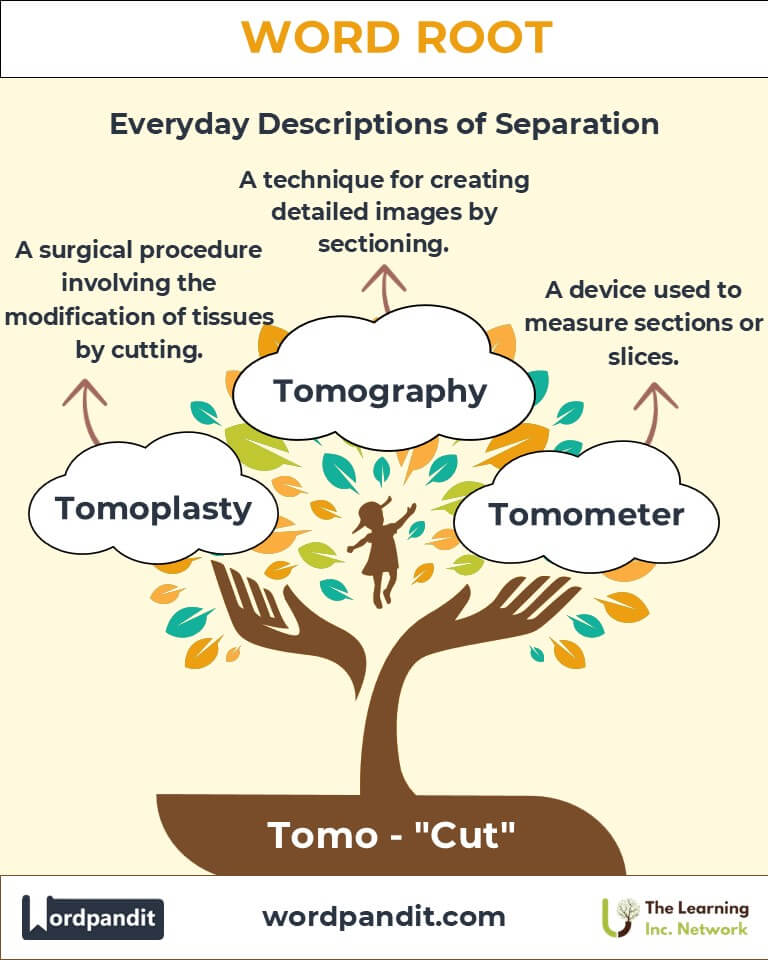Entomo: The Root of Insects in Science and Culture
Discover the intriguing world of the root "Entomo," derived from Greek, meaning "insect." From scientific studies like entomology to unconventional practices such as entomophagy, this root reveals humanity's multifaceted relationship with the insect kingdom.

Table of Contents
- Introduction: The Fascination with Entomo
- Etymology and Historical Journey
- Mnemonic: Unlocking the Power of Entomo
- Common Entomo-Related Terms
- Entomo Through Time
- Entomo in Specialized Fields
- Illustrative Story: Entomo in Action
- Cultural Significance of Entomo
- The Entomo Family Tree
- FAQs About the Entomo Root
- Test Your Knowledge: Entomo Mastery Quiz
- Conclusion: The Enduring Legacy of Entomo
Introduction: The Fascination with Entomo
When you think of insects, what comes to mind? Tiny creatures that buzz, crawl, or build incredible hives? The word root "Entomo," pronounced en-toh-moh, comes from the Greek word entomos, meaning "cut into" or "segmented," referencing the distinct body parts of insects. "Entomo" forms the foundation of words that describe the scientific, cultural, and ecological importance of insects.

Etymology and Historical Journey
The root Entomo originates from the Greek entomos (en- = "in," and temnein = "to cut"). Ancient scholars like Aristotle used entomos to categorize insects due to their segmented bodies. As scientific inquiry expanded, the root evolved into terms like entomology, defining the scientific study of insects, and influenced disciplines like zoology and agriculture.
Mnemonic: Unlocking the Power of Entomo
To remember Entomo, picture a magnifying glass revealing the intricate segments of an ant. Imagine labeling its head, thorax, and abdomen, the core elements of insect anatomy.
Mnemonic Device:
"Entomo unlocks the secrets of segmented bodies, from ants to beetles."
Common Entomo-Related Terms
- Entomology (en-tuh-mol-uh-jee): The scientific study of insects.
Example: "Her research in entomology focused on pollinator behavior." - Entomophagy (en-tuh-mof-uh-jee): The practice of eating insects.
Example: "Entomophagy is a sustainable source of protein in many cultures." - Entomopathogen (en-toh-muh-path-oh-jen): Microorganisms that cause disease in insects.
Example: "Entomopathogens are used as biological control agents in farming." - Entomophilous (en-toh-mof-uh-luhs): Plants that are pollinated by insects.
Example: "Bees are essential for entomophilous flowers to reproduce." - Entomophobia (en-toh-moh-foh-bee-uh): An intense fear of insects.
Example: "Her entomophobia made camping trips challenging."
Entomo Through Time
- Entomology (17th Century): Initially focused on insect classification, the field expanded to include behavior, ecology, and genetics.
- Entomophagy (Contemporary): While historically common in many cultures, its popularity is rising globally as an eco-friendly food source.
Entomo in Specialized Fields
- Agriculture:
- Entomopathogens combat crop pests without harmful chemicals.
- Application: Enhances sustainable farming practices.
- Medicine:
- Insect-derived compounds are explored for antibiotics and treatments.
- Example: Maggot therapy in wound healing.
- Ecology:
- Entomophilous plants depend on insects for pollination.
- Impact: Critical for ecosystem stability and food security.
Illustrative Story: Entomo in Action
Dr. Luis, an entomologist, was called to investigate a sudden decline in crop yields. His team discovered an outbreak of pests resistant to traditional pesticides. Using entomopathogens, they restored balance by targeting the pests naturally. The solution not only saved the harvest but also enriched the soil for future crops.
Cultural Significance of Entomo
Insects have long held symbolic and practical roles in human culture. In ancient Egypt, scarabs represented rebirth. In modern times, entomophagy is gaining attention for its environmental benefits. Meanwhile, insects remain vital in folklore, art, and sustainable development.

The Entomo Family Tree
- Insect (Latin: insectum, "cut into"): Refers to segmented creatures.
- Temnein (Greek: "to cut"): Root of words like anatomy.
- Myrmeco- (Greek: "ant"): Used in terms like myrmecology (study of ants).
FAQs About the Entomo Root
Q: What does "Entomo" mean?
A: "Entomo" is derived from the Greek word entomos, meaning "cut into" or "segmented." It refers to the distinct body divisions of insects, such as the head, thorax, and abdomen.
Q: What is entomology, and why is it important?
A: Entomology is the scientific study of insects. This field is vital for understanding insect behavior, ecology, and their role in ecosystems. It contributes to advancements in agriculture, pest control, pollination, and even medicine through insect-derived compounds.
Q: Why is entomophagy significant in modern times?
A: Entomophagy, the practice of eating insects, is gaining attention as a sustainable food source. Insects are rich in protein, require fewer resources to farm, and produce less greenhouse gas compared to traditional livestock.
Q: What are entomopathogens, and how are they used?
A: Entomopathogens are microorganisms like fungi, bacteria, or viruses that infect and kill insects. They are often used in biological pest control to target harmful insect species without damaging crops or the environment.
Q: What causes entomophobia, and can it be treated?
A: Entomophobia, the intense fear of insects, may stem from evolutionary instincts (avoiding harmful creatures), traumatic experiences, or cultural influences. Treatments include therapy, gradual exposure, and mindfulness techniques to reduce fear.
Q: What does "entomophilous" mean, and how does it relate to plants?
A: "Entomophilous" refers to plants that depend on insects for pollination. These plants often have brightly colored flowers, sweet nectar, or strong scents to attract pollinators like bees, butterflies, and beetles.
Q: Are insects harmful or helpful in agriculture?
A: Insects can be both. Harmful insects, like pests, damage crops, but beneficial insects, such as pollinators and natural predators, are crucial for agriculture. Integrated pest management balances these roles to enhance crop productivity.
Q: How do insects contribute to medicine and science?
A: Insects like maggots are used in wound healing (maggot therapy), while their antimicrobial compounds inspire new antibiotics. In research, they provide insights into genetics, behavior, and ecological interactions.
Test Your Knowledge: Entomo Mastery Quiz
1. What does "Entomo" mean?
2. What is entomophagy?
3. Which term describes insect-pollinated plants?
4. What does entomophobia describe?
5. What are entomopathogens used for?
Conclusion: The Enduring Legacy of Entomo
The root Entomo connects us to the vast and fascinating world of insects, reminding us of their ecological importance and cultural significance. From studying insect behavior to embracing their role in sustainable practices, Entomo words open doors to understanding our environment and ourselves. Let the legacy of Entomo inspire curiosity and respect for these small but mighty creatures.












